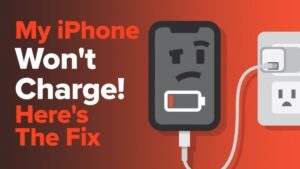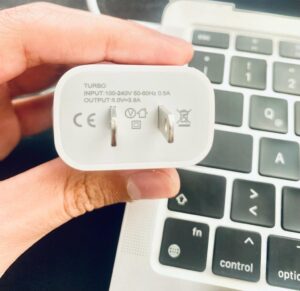Are you wondering what battery you need for a trolling motor? Well, look no further! In this article, we will provide you with the perfect solution for powering your trolling motor. Whether you’re an avid angler or a recreational boater, having the right battery is essential for a smooth and enjoyable experience on the water. So, let’s dive in and explore the different aspects to consider when choosing the ideal battery for your trolling motor.
What Battery Do I Need for a Trolling Motor?
Whether you’re an avid angler or simply enjoy leisurely fishing trips, having a reliable trolling motor is essential for maneuvering your boat on the water. But a trolling motor is only as good as the battery that powers it. To ensure smooth and efficient operation, it’s crucial to choose the right battery for your trolling motor. In this article, we will explore the different types of batteries available, their key features, and provide you with the necessary information to make an informed decision.
Understanding Trolling Motor Batteries
Before we dive into the specifics of choosing a battery for your trolling motor, let’s gain a basic understanding of trolling motor batteries themselves. Trolling motors require deep-cycle batteries to provide a steady and consistent power supply over an extended period. Unlike starter batteries used in vehicles, deep-cycle batteries are designed to discharge power gradually, making them ideal for the continuous operation of trolling motors.
1. Types of Batteries
There are three main types of batteries commonly used for trolling motors:
- Lead-Acid Batteries
- Gel Batteries
- AGM Batteries
Lead-acid batteries are the most common and affordable option. They require regular maintenance, such as checking electrolyte levels and adequate ventilation to prevent hydrogen gas buildup. Gel batteries, on the other hand, are maintenance-free, sealed, and can withstand deep discharges. AGM (Absorbent Glass Mat) batteries offer the best of both worlds, with excellent performance and minimal maintenance requirements.
2. Battery Capacity
Battery capacity is a crucial factor to consider when choosing a battery for your trolling motor. It is measured in ampere-hours (Ah) and indicates the amount of current a battery can provide over a specific time period. A higher Ah rating means the battery can supply power for a longer duration. The appropriate battery capacity depends on factors such as the size of your boat, the speed at which you intend to troll, and the duration of your fishing trips.
Choosing the Right Battery
Now that we have a basic understanding of trolling motor batteries, let’s explore the key factors to consider when selecting the right battery for your specific needs.
1. Trolling Motor Voltage
The first step is to determine the voltage required by your trolling motor. Trolling motors typically operate on either 12V, 24V, or 36V systems. Make sure to check the manufacturer’s specifications or consult your owner’s manual to determine the appropriate voltage for your motor. Choosing a battery with the correct voltage is essential to ensure compatibility and optimal performance.
2. Battery Run Time
The run time is a critical factor, especially if you plan on spending extended periods on the water. It determines how long your battery will last before needing a recharge. To calculate the approximate run time, you need to divide the battery’s capacity (in Ah) by the motor’s amp draw (usually provided by the manufacturer). For example, if you have a 100Ah battery and your motor draws 20 amps per hour, the estimated run time would be 5 hours. Keep in mind that these calculations are approximate and can vary based on other factors like wind, water conditions, and motor speed.
3. Battery Weight and Size
Consider the weight and size of the battery, as this can impact the overall performance and balance of your boat. A heavier battery may affect the stability and maneuverability, while a bulky battery could limit available space onboard. Carefully evaluate your boat’s weight capacity and available storage options to choose a battery that fits comfortably without compromising safety or convenience.
4. Battery Cycle Life
The cycle life refers to the number of charge and discharge cycles a battery can withstand before its performance starts to degrade. It’s essential to choose a battery with a higher cycle life as it offers better durability and longevity. Batteries with AGM technology often have longer cycle lives compared to traditional lead-acid batteries.
5. Maintenance Requirements
Consider the maintenance requirements of the battery you are considering. If you prefer a hands-off approach, maintenance-free options like gel batteries or AGM batteries would be preferable. However, if you don’t mind occasional maintenance, traditional lead-acid batteries offer an affordable option.
6. Charging Method
Evaluate the charging method that suits your needs. Some batteries can be conveniently charged using a standard onboard charger, while others may require a specialized charger. It’s important to ensure compatibility between your battery and charger to avoid any potential issues.
7. Budget
Lastly, consider your budget when choosing a battery for your trolling motor. While it’s tempting to opt for the cheapest option, investing in a high-quality battery will pay off in the long run. Cheaper batteries may have shorter life spans, require frequent replacements, and potentially leave you stranded on the water.
Maintenance and Care Tips
Now that you have selected the perfect battery for your trolling motor, it’s essential to follow some maintenance and care tips to ensure its longevity and optimal performance:
1. Regular Charging
Ensure that you charge your battery regularly, preferably after each use. This practice helps maintain its capacity and prevents sulfation, a process that occurs when batteries are left discharged for extended periods, leading to reduced performance.
2. Keep It Charged
Avoid storing your battery in a discharged state. Fully charge it before storing and periodically top it up if necessary. This practice prolongs the battery’s life and prevents internal damage caused by sulfation.
3. Clean Connections
Regularly clean the battery terminals and connections to remove any dirt, debris, or corrosion. This ensures a solid connection and prevents voltage drop, which can impact the overall performance of your trolling motor.
4. Proper Storage
Store your battery in a cool and dry place. Extreme temperatures can affect battery performance and reduce its overall lifespan. Additionally, ensure the battery is secured properly to prevent damage during transit or rough water conditions.
5. Periodic Inspections
Perform periodic inspections of your battery to check for any signs of damage, leakage, or swelling. If you notice any abnormalities, it’s crucial to address them promptly to prevent further issues.
6. Safety Precautions
Always follow safety guidelines provided by the battery manufacturer. Handle the battery with care, ensuring proper ventilation during charging, and avoid exposing it to open flames or smoking near the battery.
Choosing the right battery for your trolling motor is essential to ensure smooth and hassle-free fishing trips. Consider factors such as battery voltage, capacity, weight, cycle life, maintenance requirements, and budget when making your decision. Remember to follow proper maintenance and care practices to maximize the lifespan and performance of your battery. With the right battery powering your trolling motor, you can enjoy countless hours on the water, reeling in your next big catch.
Frequently Asked Questions
What type of battery is recommended for a trolling motor?
The type of battery recommended for a trolling motor is a marine deep cycle battery. These batteries are designed to provide a steady amount of power over an extended period of time, making them ideal for powering trolling motors.
What is the difference between a marine starting battery and a deep cycle battery?
A marine starting battery is designed to provide a short burst of high power to start an engine, while a deep cycle battery is built to provide a steady flow of power over a longer period of time. For a trolling motor, a deep cycle battery is the better choice as it can handle the constant use and deep discharging that may occur during trolling.
How do I determine the right battery size for my trolling motor?
To determine the right battery size for your trolling motor, you need to consider the voltage and the reserve capacity (RC) rating. The voltage should match the motor’s requirements, typically 12V or 24V. The RC rating indicates how long the battery can provide a certain amount of power. Higher RC ratings mean longer battery life. Consider your usage needs and choose a battery with the appropriate voltage and RC rating.
Can I use a car battery for a trolling motor?
While it is possible to use a car battery for a trolling motor, it is not recommended. Car batteries are typically designed for starting engines and are not built to handle the continuous discharge required by a trolling motor. Using a marine deep cycle battery specifically designed for trolling motors will ensure optimal performance and longevity.
How long can a trolling motor run on a fully charged battery?
The runtime of a trolling motor on a fully charged battery depends on various factors, such as the motor’s power consumption, the battery’s capacity, and the speed at which you operate the motor. Generally, you can expect a trolling motor to run for several hours on a fully charged deep cycle battery. However, it is always a good idea to carry an extra battery or have a backup plan in case you need additional runtime.
How should I maintain and recharge my trolling motor battery?
To maintain and recharge your trolling motor battery, it is essential to follow the manufacturer’s guidelines. Regularly check the battery’s water levels (if applicable) and keep them filled to the recommended levels. Avoid over-discharging the battery and recharge it promptly after each use. Use a quality battery charger specifically designed for deep cycle batteries and follow the charging instructions provided by the manufacturer. Proper maintenance and charging will ensure the longevity and performance of your trolling motor battery.
Final Thoughts
In conclusion, when choosing a battery for your trolling motor, it is important to consider the voltage, amp-hour capacity, and battery type. The ideal battery for a trolling motor is a deep cycle marine battery, which is designed to provide a steady amount of power over a longer period of time. It is recommended to opt for a battery with higher amp-hour rating to ensure longer runtime on the water. Additionally, selecting the appropriate voltage that matches your trolling motor’s requirements is crucial for optimal performance. So, when asking yourself, “What battery do I need for a trolling motor?” make sure to prioritize these factors to find the best battery to meet your needs.


